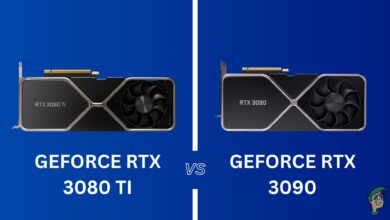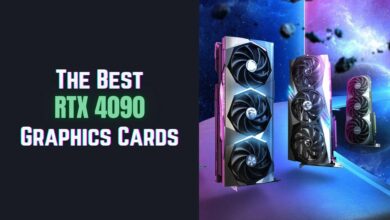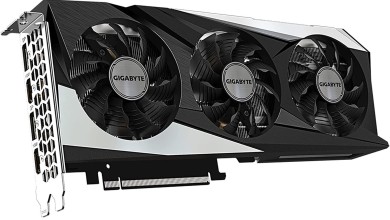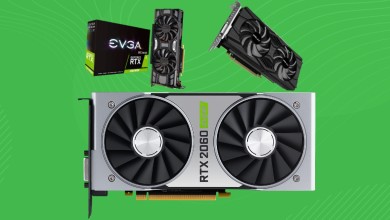9 Best RTX 4080 Graphics Cards – Expert Reviews
It’s time for an upgrade now that Nvidia’s new RTX 4080 has hit the market shelves. The RTX 4080, a new high-end GPU built on the revolutionary Ada Lovelace architecture, is one of the fastest gaming GPUs currently available. The new RTX 4080 is the successor to the RTX 3080 and delivers significant improvements in terms of performance as well as features.
You should know which RTX 4080 model is the best if you want to spend $1200 or more on this premium graphics card. Due to the abundance of aftermarket RTX 4080 graphics cards, finding the right one for your PC setup might be challenging.
This is why we have compiled a list of the best RTX 4080 graphics cards currently on the market, as determined by our team of hardware experts. You can find the ideal RTX 4080 model for your needs by consulting this highly specialized list based on testing results.
The Best RTX 4080 Graphics Cards – Our Picks
| # | Preview | Product Name | Award | Details |
|---|---|---|---|---|
| 1 | 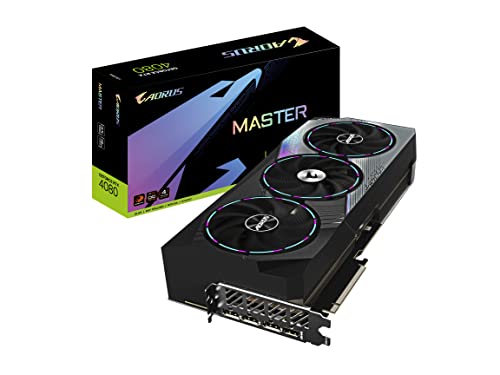 | Gigabyte AORUS Master GeForce RTX 4080 | Best Overall RTX 4080 | Check Price |
| 2 | 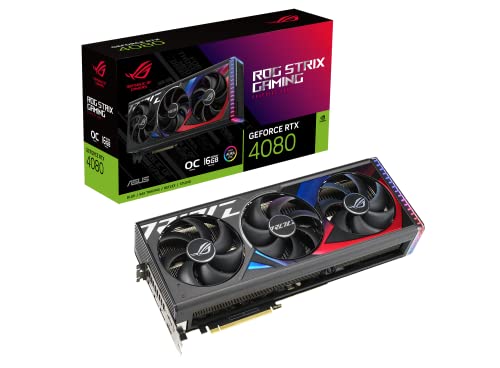 | ASUS ROG Strix GeForce RTX 4080 OC | Best Premium RTX 4080 | Check Price |
| 3 |  | MSI GeForce RTX 4080 SUPRIM X | Best Overclocking RTX 4080 | Check Price |
| 4 |  | MSI GeForce RTX 4080 Gaming X Trio | Best Looking RTX 4080 | Check Price |
| 5 | 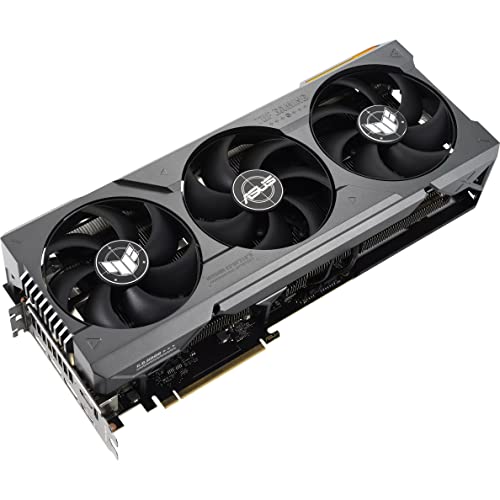 | ASUS TUF Gaming GeForce RTX 4080 | Best Value RTX 4080 | Check Price |
| 6 | 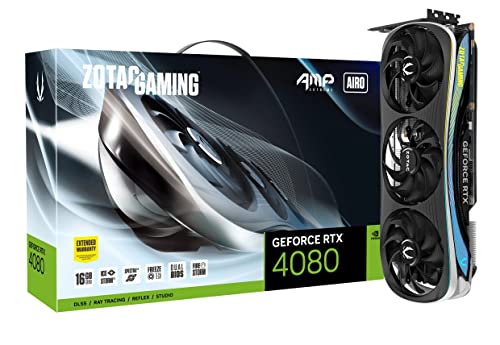 | ZOTAC GeForce RTX 4080 AMP Extreme AIRO | Best RGB RTX 4080 | Check Price |
| 7 | 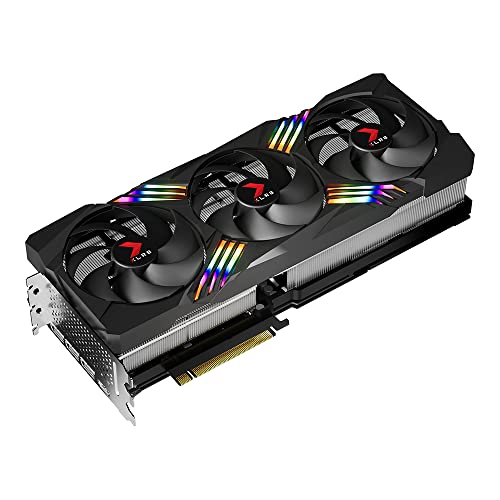 | PNY GeForce RTX 4080 XLR8 | Most Unique RTX 4080 | Check Price |
| 8 | 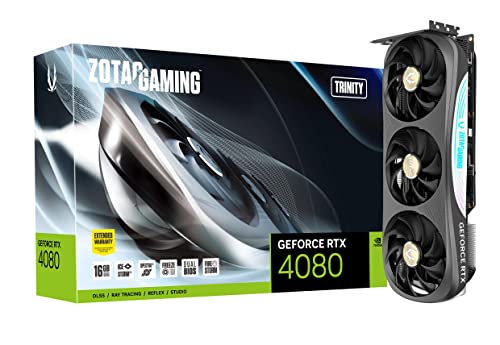 | ZOTAC GeForce RTX 4080 Trinity | Best Budget RTX 4080 | Check Price |
| 9 |  | MSI GeForce RTX 4080 VENTUS 3X | Best Entry Level RTX 4080 | Check Price |
| # | 1 |
| Preview |  |
| Product Name | Gigabyte AORUS Master GeForce RTX 4080 |
| Award | Best Overall RTX 4080 |
| Details | Check Price |
| # | 2 |
| Preview |  |
| Product Name | ASUS ROG Strix GeForce RTX 4080 OC |
| Award | Best Premium RTX 4080 |
| Details | Check Price |
| # | 3 |
| Preview |  |
| Product Name | MSI GeForce RTX 4080 SUPRIM X |
| Award | Best Overclocking RTX 4080 |
| Details | Check Price |
| # | 4 |
| Preview |  |
| Product Name | MSI GeForce RTX 4080 Gaming X Trio |
| Award | Best Looking RTX 4080 |
| Details | Check Price |
| # | 5 |
| Preview |  |
| Product Name | ASUS TUF Gaming GeForce RTX 4080 |
| Award | Best Value RTX 4080 |
| Details | Check Price |
| # | 6 |
| Preview |  |
| Product Name | ZOTAC GeForce RTX 4080 AMP Extreme AIRO |
| Award | Best RGB RTX 4080 |
| Details | Check Price |
| # | 7 |
| Preview |  |
| Product Name | PNY GeForce RTX 4080 XLR8 |
| Award | Most Unique RTX 4080 |
| Details | Check Price |
| # | 8 |
| Preview |  |
| Product Name | ZOTAC GeForce RTX 4080 Trinity |
| Award | Best Budget RTX 4080 |
| Details | Check Price |
| # | 9 |
| Preview |  |
| Product Name | MSI GeForce RTX 4080 VENTUS 3X |
| Award | Best Entry Level RTX 4080 |
| Details | Check Price |
Last Update on 2025-12-18 at 19:51 / Affiliate links / Images from Amazon Product Advertising API
1. Gigabyte AORUS Master GeForce RTX 4080
Best Overall RTX 4080
CUDA Cores: 9728 | Boost Clock: 2550 MHz | Memory: 16GB GDDR6X | Memory Speed: 22.4 Gbps | Power Connectors: 1x 16-pin | Dimensions: 357 x 163 x 75mm (3.5 Slot) | Outputs: 1x HDMI 2.1a, 3x DisplayPort 1.4a | Recommended PSU: 850W
The Gigabyte AORUS Master RTX 4080 is one of the very best RTX 4080 options available, despite the fact that Gigabyte’s marketing for this specific graphics card can occasionally be downright juvenile. If you’re looking for the finest RTX 4080 that money can buy, you should take a look at this high-end aftermarket model.
Cooling is undoubtedly at the top of the list of areas where the AORUS Master RTX 4080 shines. The RTX 4080 GPU is cooled by Gigabyte’s Windforce GPU cooler, and it does an excellent job of it. Gigabyte has utilized 13 copper heat pipes and a sizable vapor chamber, which is in direct contact with the GPU die to maximize the heat dissipation abilities of the cooler.
While Gigabyte’s marketing for its GPU fans is pretty absurd, the “Bionic Shark Fans” actually perform rather well. In an effort to lower temperatures and boost heat dissipation, their shape and design have been modified to optimize the airflow and pressure of the fans. Naturally, to reduce turbulence, the middle fan rotates in the opposite direction from the other two.

The factory overclock provided by Gigabyte seems to be very modest for such an advanced aftermarket GPU. While the AORUS Master RTX 4080’s 2550 MHz boost clock is only 30 MHz higher than the factory clock, you still have a lot of room to overclock this card. This is where the expanded power budget and improved cooling of the AORUS Master RTX 4080 really come into play.
The RTX 4080 AORUS Master from Gigabyte has an LCD display mounted on the side of the card, which is a highly distinguishing feature. You can add your own text, images, and GIFs to this display to make it more personalized. The display can provide GPU temperature and other graphics card information. It is a small but charming accent to an unimaginative overall design.
Regarding about the design, the Gigabyte AORUS Master RTX 4080 tends to fall short in this regard. Although aesthetics are a personal concern, the consensus regarding the design of this card appears to be quite unfavorable. Despite the colorful RGB implementation in the fan slots, the card’s overall appearance is pretty underwhelming.
This is purely a subjective concern, so unless it matters to you personally, it shouldn’t really affect your decision to buy. For those of you who are enthusiasts, mounting the card vertically does make it appear pretty spectacular. Therefore, you may consider taking that approach.
The Gigabyte AORUS Master RTX 4080 is, in essence, one of the most extravagant iterations of the Nvidia GPU available. However, the high price is a major factor to take into account before you make your final decision.
The AORUS Master RTX 4080 takes home the prize for the best overall RTX 4080 in our roundup owing to its innovative cooling system and exceptional feature set.
2. ASUS ROG Strix GeForce RTX 4080 OC
Best Premium RTX 4080
Pros
- Superb Cooling Performance
- Silent Operation
- Superb Aesthetics
- Lots of Overclocking Headroom
Cons
- Extremely Expensive
CUDA Cores: 9728 | Boost Clock: 2625 MHz | Memory: 16GB GDDR6X | Memory Speed: 22.4 Gbps | Power Connectors: 1x 16-pin | Dimensions: 357.6 x 149.3 x 70.1mm (3.5 Slot) | Outputs: 2x HDMI 2.1a, 3x DisplayPort 1.4a | Recommended PSU: 750W
The ASUS ROG Strix GeForce RTX 4080 OC, the company’s flagship model for this GPU, is the next pick in our roundup. The ROG Strix series has consistently been a favorite among enthusiasts, and this iteration seems to be upholding the norm. The ROG Strix RTX 4080 OC is our choice for the best premium RTX 4080 currently available.
Gamers and enthusiasts alike will appreciate the fact that the ASUS ROG Strix RTX 4080 excels in terms of performance and thermals. The GPU is kept cool even under high load thanks to the card’s enormous vapor chamber, which has machined slots for seven heat pipes. Additionally, the fans are superbly crafted, with a particular emphasis on ventilation through the heatsink.
As a result, even when overclocked, the ASUS ROG Strix RTX 4080 is one of the coolest-running RTX 4080 cards around. Due to the card’s outstanding thermal performance, gamers may use it to its full potential without stressing about thermal throttling. As a result, anyone looking for a top-of-the-line graphics card should consider the ASUS ROG Strix RTX 4080, if they can afford it.

Acoustics and thermal performance are closely related, and the ASUS ROG Strix RTX 4080 performs superbly in both areas. Three Axial Tech fans, which are specially made to move air silently and effectively, are featured on the card. Additionally, the fans stay completely silent when the card is under low loads in order to improve acoustics.
ASUS has taken the liberty to overclock the GPU out of the box due to the increased thermal overhead and a better power budget. The 2625 MHz boost clock is a huge improvement over the factory frequencies, and manual GPU overclocking allows you to raise it much higher. Additionally, the card offers Dual BIOS functionality that can be useful when overclocking.
The ASUS ROG Strix RTX 4080 has an exceptionally gorgeous design. Numerous RGB lighting fixtures compliment the card’s streamlined look and clean lines to provide a genuinely distinctive appearance. The card is also exceptionally well-constructed, with a durable metal shroud. Although the aesthetics are a little less striking than in prior iterations, they are nonetheless spectacular.
There is no denying that the ASUS ROG Strix RTX 4080 has a top-notch appearance that will be noticed when put in a gaming rig, especially in a vertical mount.
Ultimately, the ASUS ROG Strix RTX 4080 OC is one of the most expensive aftermarket RTX 4080 graphics cards that is currently being offered. There is simply no other model on the market that demands such a price premium, which is why it is hard to recommend as our top choice.
Still, the ASUS ROG Strix RTX 4080 is an excellent option for professionals and gamers that demand the finest. The features and performance of the card make it a very enticing product, despite the price tag.
3. MSI GeForce RTX 4080 SUPRIM X
Best Overclocking RTX 4080
CUDA Cores: 9728 | Boost Clock: 2640 MHz | Memory: 16GB GDDR6X | Memory Speed: 22.4 Gbps | Power Connectors: 1x 16-pin | Dimensions: 336 x 142 x 78mm (3.5 Slot) | Outputs: 1x HDMI 2.1a, 3x DisplayPort 1.4a | Recommended PSU: 850W
The most expensive model of the RTX 4080 GPU that MSI currently offers is the SUPRIM RTX 4080 X. Due to the exceptional functionality and style of the cards in this series, the SUPRIM line has rapidly risen in popularity. The SUPRIM RTX 4080 X fits into this trend as well.
For this RTX 4080 model, MSI installed an incredibly large 3.5-slot cooler to the PCB. The Tri-Frozr 3S cooler design of the SUPRIM RTX 4080 results in excellent thermal performance. The SUPRIM has no trouble cooling down the power-hungry RTX 4080 GPU, despite the challenge that it represents. The GPU can even be overclocked without any concern about overheating.
MSI has included three fans to help with heat dissipation in addition to the large heatsink’s raw thermal performance. The TORX Fan 5.0 is the most recent version of MSI’s distinctive TORX design, and the company says that it will provide up to 23% more airflow than a conventional GPU fan. Leaving marketing out of the conversation, the fans indeed move a lot of air at low RPMs and are remarkably silent.

Regarding aesthetics, the SUPRIM series from MSI has historically generated some debate. Some tend to despise the design and want something a little more generic, while other people appreciate the design’s raw aggression and risky approach. The SUPRIM X RTX 4080 will undoubtedly be a conversation point, irrespective of your stance.
The use of RGB lighting by MSI in this particular card is pretty distinctive and amazing. Three RGB strips next to the fans on the front of the aluminum shroud give the card a highly unique look. Thanks to the RGB lighting on the front, this model looks quite nice when mounted in a vertical GPU mount.
Additionally, the MSI SUPRIM X RTX 4080‘s power budget has been slightly increased, giving you more room to boost the clock speed. The card also has a factory boost clock that can reach 2640 MHz out of the box. Additionally, you have Dual BIOS support, which is a useful feature to have in particular when overclocking a GPU.
So all in all, our choice for the best overclocking RTX 4080 is the MSI SUPRIM X. This GPU stands out from the competition when it comes to overclocking thanks to its superb cooling system and large power budget.
However, the MSI SUPRIM X RTX 4080’s extraordinarily high pricing is one of its biggest drawbacks. The SUPRIM model of the RTX 4080 is exceedingly pricey compared to the MSRP, making it a complicated buy. It is up to the prospective consumer to decide whether the extra expense for an aftermarket variant like the SUPRIM is worthwhile.
4. MSI GeForce RTX 4080 Gaming X Trio
Best Looking RTX 4080
Pros
- Superb Aesthetics
- Unique RGB Implementation
- Great Cooling
- Impressive Acoustics
Cons
- Relatively Pricy
CUDA Cores: 9728 | Boost Clock: 2610 MHz | Memory: 16GB GDDR6X | Memory Speed: 22.4 Gbps | Power Connectors: 1x 16-pin | Dimensions: 337 x 140 x 67mm (3.5 Slot) | Outputs: 1x HDMI 2.1a, 3x DisplayPort 1.4a | Recommended PSU: 850W
In contrast to their SUPRIM version, MSI’s RTX 4080 Gaming X Trio is a slightly more affordable high-end variant of the RTX 4080. The price of the Gaming X Trio is in line with similar products like the ASUS TUF Gaming RTX 4080 and the ZOTAC Trinity OC RTX 4080. It is by no means a cheap card, but it offers a bit more than the aforementioned variants when it comes to value.
The majority of the high-end features present in the SUPRIM line have been carried over to the Gaming X Trio version by MSI, which is outstanding. This is another example of the Tri Frozr 3 thermal design, which is at the core of the cooling system for the RTX 4080 GPU in this graphics card. Eight copper heatpipes and a vapor chamber design make up the cooling system, which transfers the heat from the GPU.
This graphics card also has three TORX 5.0 fans fitted by MSI. Compared to standard GPU fans, these fans are slightly modified and distinctive in their design, which increases airflow through the fins by about 23%. (as claimed by MSI). The fans are of great quality and provide a silent experience even when the card is under some load, marketing claims aside.

The MSI RTX 4080 Gaming X Trio is overclocked right out of the box even though it is not the company’s flagship model of the RTX 4080. The 2610 MHz factory boost doesn’t change the game by any means, but it gives you a good place to start when manually overclocking. The card does have a decent power budget, even though it is not extraordinary by any means.
The Gaming X Trio is remarkable in terms of appearance. Although aesthetics are a matter of opinion, we believe that MSI’s RTX 4080 Gaming X Trio is the best looking RTX 4080 on the market. It has a really modern, angular design that is neither garish nor boring. The fan shroud has the optimal amount of character lines to distinguish this card from the competition.
The interesting feature of this particular card is its RGB lights. On the front, MSI has only included three diagonal RGB light strips, but they are the perfect number to adequately illuminate the card. Due to its beautiful fan shroud, this model would be a fantastic fit for vertical GPU mounting. Of course, the Mystic Light software ties all the RGB together.
Altogether, the MSI RTX 4080 Gaming X Trio is unquestionably one of the most enticing models of this specific GPU available. The MSI RTX 4080 Gaming X Trio is just a great choice if the price fits your budget. Although it may not perform as well as some of the more expensive models featured on our list, it is definitely not far behind.
5. ASUS TUF Gaming GeForce RTX 4080
Best Value RTX 4080
Pros
- High Value for Money
- Solid Thermal Performance
- Quiet Fans
Cons
- Minimal RGB Lighting
- No Factory Overclock
CUDA Cores: 9728 | Boost Clock: 2535 MHz | Memory: 16GB GDDR6X | Memory Speed: 22.4 Gbps | Power Connectors: 1x 16-pin | Dimensions: 348.2 x 150 x 72.6mm (3.65 Slot) | Outputs: 2x HDMI 2.1a, 3x DisplayPort 1.4a | Recommended PSU: 750W
When it comes to AIB options, the TUF Gaming line from ASUS has always been aimed at the mid-range, and the RTX 4080 model is no exception. Despite not being as flashy or extravagant as its ROG Strix counterparts, the ASUS TUF Gaming RTX 4080 performs admirably and offers outstanding value for money.
Thanks to ASUS’s vapor chamber layout, the TUF Gaming version offers an extremely effective cooling solution. On paper, the card is thicker than the ASUS ROG Strix RTX 4080, spanning a whopping 3.65 slots. However, the majority of that width is concealed by the enormous heatsink. The substantial heatsink removes heat from the GPU and memory components. Of course, there are numerous copper heatpipes that aid the heatsink in its task.
Three Axial tech fans are also present in the heatsink assembly. Given its unique design, ASUS claims that the current iteration of Axial Tech has 23% better airflow than its predecessor. The fact that the fans are so quiet and circulate so much air through the heatsink fins helps the card’s thermal performance.

The TUF Gaming line also emphasizes durability, and ASUS does so by putting “military-grade” 20K capacitors on the PCB that have a 20,000-hour lifespan at 105 degrees Celsius. Even if we choose to put marketing aside, this can unquestionably increase the lifespan of the PCB components. This card is also offered in an “overclocked” variant, but we chose the standard model due to its lower price.
The ASUS TUF Gaming RTX 4080 is standard in terms of visuals. The premise of the entire series is toughness and durability, and looking at the metallic exoskeleton makes that point quite clear. Additionally, the card has very little RGB lighting, with the only visible spectrum being contained under the ASUS TUF logo. More areas of RGB lighting would have been beneficial from an aesthetic point.
You definitely wouldn’t choose this card based on its appearance or aesthetics. On the other hand, it is perfect for those who want a discrete and subtle RTX 4080 model that offers all the performance but does not appear garish. It does appear right at home when installed in a professional workstation machine.
When compared to the other options on the market, the ASUS TUF Gaming RTX 4080 appears to be a good deal. It might not have all the bells and whistles of the more expensive ROG Strix model, but for a relatively modest price premium, it has an excellent cooling system and quiet fans.
Our choice for the best value RTX 4080 currently on the market goes to the ASUS TUF Gaming RTX 4080 thanks to its unbeatable value.
6. ZOTAC GeForce RTX 4080 AMP Extreme AIRO
Best RGB RTX 4080
Pros
- Superb Cooling Performance
- Lots of RGB Lighting
- Overclocked
Cons
- Quite Expensive
- Controversial Shape
CUDA Cores: 9728 | Boost Clock: 2565 MHz | Memory: 16GB GDDR6X | Memory Speed: 22.4 Gbps | Power Connectors: 1x 16-pin | Dimensions: 355.5 x 149.6 x 72.1mm (3.5 Slot) | Outputs: 1x HDMI 2.1a, 3x DisplayPort 1.4a | Recommended PSU: 750W
Despite having a moniker that is difficult to pronounce, ZOTAC’s most powerful version of the RTX 4080 is called the AMP Extreme AIRO, and it is a capable piece of graphics hardware. Models like the Gigabyte AORUS Master and the ASUS ROG Strix provide competition for the AMP Extreme AIRO RTX 4080, which is available at a premium price point.
We found the RTX 4080 AMP Extreme AIRO to have one of the finest cooling systems available. The GPU die is cooled by nine precision-machined copper heatpipes that go through a 3.5-slot thick heatsink array in the “IceStorm 3.0” cooling system. The ZOTAC RTX 4080 AMP Extreme AIRO is able to maintain its extreme cooling thanks to this design, even under heavy workloads.
The cooling approach is rounded out by three “Freeze Tech” fans, which run quietly when the GPU isn’t under heavy load but turn off entirely otherwise. A common feature among the fans of these high-end GPUs is that the central fan rotates in the opposite direction of the others to minimize turbulence.

ZOTAC offers a reasonable standard bump above stock clocks with their RTX 4080 AMP Extreme AIRO model’s factory overclocked setting of 2565 MHz. However, this variant’s increased power reserves and enhanced cooling capabilities allow for competent manual overclocking. ZOTAC suggests a minimum of a 750W power supply for this card, so be sure you have one installed.
The ZOTAC RTX 4080 AMP Extreme AIRO has a unique look that not everyone appreciates. Its shape and RGB execution are both novel and appealing, yet at first glance, the design seems odd and unsightly. The card’s plastic casing is less angular and more rounded than what we’re used to seeing on current graphics cards.
On the other hand, the RGB lighting is brilliantly executed. The massive RGB bar that is located around the edge of the graphics card will be visible in its entirety if the card is installed in the case on its side. Its RGB approach is both innovative and aesthetically pleasing, and as a result, it easily earns our selection as the best RGB RTX 4080 in this roundup.
The RTX 4080 is also one of the best graphics cards for video editing, and this ZOTAC variant is no exception.
The ZOTAC RTX 4080 AMP Extreme AIRO, being a high-end variant of the RTX 4080, naturally comes with a significant price premium over the company’s suggested retail price (MSRP). Despite this, purchasing one of these is still a more cost-effective option than purchasing one of the really lavish Strix or SUPRIM versions.
Although the graphics card itself is not inexpensive, the total package may be justifiable in the long run despite the expense.
7. PNY GeForce RTX 4080 XLR8
Most Unique RTX 4080
Pros
- Decent Thermals
- Unique RGB Implementation
- Attractive Design
Cons
- Relatively Loud Fans
- Small Factory Overclock
CUDA Cores: 9728 | Boost Clock: 2505 MHz | Memory: 16GB GDDR6X | Memory Speed: 22.4 Gbps | Power Connectors: 1x 16-pin | Dimensions: 331.7 x 136.9 x 71.1mm (3.5 Slot) | Outputs: 1x HDMI 2.1a, 3x DisplayPort 1.4a | Recommended PSU: 750W
Even though they aren’t as well-known as the other AIBs on our list, PNY offers several fantastic graphics card variants. Perhaps the worst-named product ever, the PNY GeForce RTX 4080 16GB XLR8 Gaming VERTO EPIC-X RGB OC Triple Fan graphics card nevertheless has several redeeming features that earn it a place among the best in this list.
The PNY RTX 4080 XLR8 (yes, we refuse to write the full name) is equipped with a robust heatsink assembly, much like the majority of other RTX 4080 variations on the market. The RTX 4080 GPU requires this since it generates a lot of heat and consumes a lot of power even when not manually overclocked. To effectively eliminate heat from the GPU, a number of copper heat pipes work in tandem with a heatsink that occupies roughly 3.5 of the available slots.
In order to dissipate the heat generated by the heatsink’s fins, the XLR8 features three front-facing fans. The central fan rotates counterclockwise to the outside fans, which levels out the airflow and makes it more efficient. When under light load, the card’s fans aren’t very noisy, but they do start to spin at a higher rate as the temperature rises.

This model of PNY’s RTX 4080 is their strongest offering and has a factory overclock. This variant’s boost clock can be manually adjusted from its default of 2505 MHz, which is modest compared to other available alternatives. Due to its superior cooling and increased power budget, the card allows for a reasonable overclocking experience.
The PNY RTX 4080 XLR8 is aesthetically one of the most striking video cards available. It doesn’t accomplish anything especially novel or unconventional, but it does manage the uncommon feat of nailing every aspect of design on an aftermarket card. The “X” created by the diagonal RGB light strips on the front of the card is a nod to the card’s XLR8 logo, and it’s a sight to behold.
When it comes to RGB, this card has an outstanding and well-considered RGB lighting solution. The addition of the front RGB strips makes the card appear a lot nicer when mounted vertically. This RTX 4080 version is visually distinct from the rest of the pack and hence receives the most unique RTX 4080 award.
On a related note, the RTX 4080 is also one of the best graphics cards for VR, and the PNY variant may be the ideal choice for it.
The PNY RTX 4080 XLR8 is a midrange graphics card that can compete with the likes of the ASUS TUF Gaming RTX 4080. As a result, if you’re interested in giving PNY a go, you might want to think about getting this specific card because of the great quality it provides. It’s not the finest option out there, but if you’re shortlisting your options, you should consider it.
8. ZOTAC GeForce RTX 4080 Trinity
Best Budget RTX 4080
CUDA Cores: 9728 | Boost Clock: 2505 MHz | Memory: 16GB GDDR6X | Memory Speed: 22.4 Gbps | Power Connectors: 1x 16-pin | Dimensions: 356.1 x 150.1 x 71.4mm (3.5 Slot) | Outputs: 1x HDMI 2.1a, 3x DisplayPort 1.4a | Recommended PSU: 750W
The Trinity is the most basic and stripped-down version of ZOTAC’s RTX 4080 graphics cards. For anyone looking to purchase an RTX 4080 variant without spending more than the MSRP, this model should be an excellent option. The ZOTAC RTX 4080 Trinity is our top pick for the best budget RTX 4080 owing to its very modest price premium.
There is a sizable vapor chamber and multiple composite copper heat pipes in the RTX 4080 Trinity, making it a reliable cooling solution despite its budget-friendly pricing. Although it isn’t as big or as effective as the heatsink assemblies on more expensive models, this one does a fine job of keeping things cool. Overclocking might be a bit restrictive, even though the card operates at reasonable temperatures when left at the factory defaults.
ZOTAC’s bespoke fans provide ventilation, although they’re simply the same ordinary graphics card fans you’d find on any budget model. Under light GPU usage, they are reasonably silent, but when the card is being taxed, the noise level increases noticeably. The third fan, like other most modern Nvidia GPU models, forces air through the heatsink assembly and out the opposite side.

The Trinity model, despite having a lower base price point, nevertheless has some cool extras to offer customers. It is handy to be able to overclock with this graphics card because it supports dual BIOS. In addition to that, it includes a solid metal backplate, which is an unusual feature in cards priced at this level. On the other hand, there is no overclock applied by the manufacturer.
The design of the RTX 4080 Trinity does not have a lot of aesthetic appeal. It is a straightforward and unpretentious card, and the RGB lighting is really subdued, which is a trait that is becoming more typical of recent graphics cards. The design of the card is adequate, but it will not appeal to those who like the appearance of their graphics cards to be more eye-catching.
On the other hand, if you want your workstation PC to have a covert appearance or you simply favor an all-black build, then this card is an excellent option for you to consider.
If you need an aftermarket version of the RTX 4080 but don’t want to spend an arm and a leg on it, the entry-level solution that ZOTAC offers is one you should explore further. This card is still fairly competent and has the potential to deliver amazing value, despite the fact that it lacks some of the more exciting attributes.
9. MSI GeForce RTX 4080 VENTUS 3X
Best Entry Level RTX 4080
Pros
- Minimal Price Premium
- Acceptable Thermals
Cons
- No RGB Lighting
- Mediocre Acoustics
- No Factory Overclock
CUDA Cores: 9728 | Boost Clock: 2520 MHz | Memory: 16GB GDDR6X | Memory Speed: 22.4 Gbps | Power Connectors: 1x 16-pin | Dimensions: 322 x 136 x 63mm (3.5 Slot) | Outputs: 1x HDMI 2.1a, 3x DisplayPort 1.4a | Recommended PSU: 750W
Our last selection for the day is MSI’s entry-level RTX 4080 VENTUS 3X model. The VENTUS was a bargain variant with a few extra bells and whistles in earlier generations, but the RTX 4080 version has changed that. The RTX 4080 VENTUS 3X now attempts to meet the GPU’s MSRP set by Nvidia, which necessitates cutting the card down to its bare essentials.
MSI uses a substantial cooling system with a sizable vapor chamber and copper heat pipes underneath the metal shroud. This is a very typical aftermarket graphics card solution for powerful GPUs like the RTX 4080. Although this specific variant’s thermal performance is pretty respectable, it does not match that of the more expensive options on our list. Given that the price premium is also very minimal in perspective, the performance is to be expected.
When the card is under light loads, the three front-mounted TORX 4.0 fans on the MSI RTX 4080 VENTUS perform admirably in terms of noise. The fans do have a tendency to compensate pretty aggressively as the load increases, however, and the noise level increases to a discernible level. If the card is mounted in a closed chassis, it might not be intrusive, but it is undoubtedly more obvious than the other choices on this list.

As anticipated, this specific version of the MSI RTX 4080 VENTUS does not come factory overclocked. There is an overclocked version of this card, although it costs a little more and does not aim for the MSRP price. This card’s manual overclocking capabilities may also be somewhat constrained because of its unremarkable cooling and power efficiency.
The MSI RTX 4080 VENTUS 3X has a similar aesthetic as the VENTUS products of earlier generations. The card features an industrial design with a silver metallic shroud and no RGB lighting. The design is simple and straightforward, which is in line with the budget-oriented position of this particular variant. However, not everyone will like this look, and the lack of RGB lighting may also be a deal-breaker for some buyers.
The card does feature a metal backplate, which adds to the aesthetics of the card. Moreover, the build quality is rather premium for a graphics card that is aimed at MSRP.
Overall, the low projected price premium of the MSI RTX 4080 VENTUS results in excellent value for money. Although it makes some minor compromises here and there, as a whole, it is still rather well-rounded. Due to its MSRP price goal and good value for money, we suggest this model as the best entry level RTX 4080.
How we picked and tested
It was a tedious process to select the best of the best among the myriad aftermarket variations of the RTX 4080 that AIB partners have filled the market with. To separate the best RTX 4080 graphics cards from the rest of the pack, we adhered to a stringent vetting procedure.
The thermal qualities of the RTX 4080 under evaluation constituted our main deciding factor. The RTX 4080 GPU can produce a lot of heat that needs to be appropriately handled because it is an extraordinarily powerful processor with a massive power budget. In light of this, we gave priority to the variations with the best thermal performance and design.
Along with any factory overclock that the manufacturer may have modified, we also emphasized the power delivery of the particular graphics card. Also taken into account were other features like dual BIOS, extra onboard ports, and fan headers.
Highly comparable in importance to the card’s thermal performance is its acoustic performance. We only chose the RTX 4080 models with good baseline acoustic performance because there is no point in getting a high-end card that sounds like a jet engine while running.
Although aesthetics are a matter of choice, they are very crucial when choosing an aftermarket graphics card. We also paid attention to feedback from consumers in general on the design of the specific RTX 4080 cards.
The ultimate deciding factors for the RTX 4080 variants were their pricing and value appeal. The price-to-performance ratio of the card eventually becomes a crucial aspect because different variants demand different premiums over MSRP.
Our talented team of hardware experts rigorously tested each of the RTX 4080 models we ultimately chose. Thermal, acoustic, and performance tests were conducted in a variety of real-world scenarios as part of the rigorous testing process.
Finally, our editors and hardware specialists collaborated to compile the definitive ranking of the best RTX 4080 graphics cards available. Numerous statistical points, customer reviews, and the editorial staff’s subjective judgments all played a role in creating this ranking.
What is DLSS 3.0?
Back in 2018 with its RTX 2000 series of graphics cards built on the Turing architecture, Nvidia unveiled the ground-breaking DLSS or Deep Learning Super Sampling technology. It has undergone numerous generational changes throughout the years, and with the RTX 4000 series, we receive DLSS 3.0 in its most recent form.
The Nvidia RTX 4000 series GPUs can employ DLSS 3.0 to significantly increase their gaming performance because of the new fourth-generation Tensor Cores and the built-in Optical Flow Accelerator. Even when it is rendering at a different resolution, DLSS, which is essentially a super-sampling technology powered by AI, is incredibly effective and produces results that are very comparable to native resolution.
Of course, Nvidia asserts that DLSS 3.0 offers even greater performance enhancements than DLSS 2.0 thanks to artificial frame generation backed by AI, but games have not yet adopted this technology in a widespread manner. When this technology is extensively available, we will have to test it to check the validity of Nvidia’s claims.
As of right now, DLSS 3.0 appears to be just as promising as DLSS 2.0, if not more.
Things to know about the RTX 4080
The new Nvidia GeForce RTX 4080 is a high-end graphics card that is among the fastest gaming graphics cards the company has ever developed. It is a part of Nvidia’s new RTX 4000 series of GPUs based on the Ada Lovelace architecture. As a result, there are several new features and generational improvements in the RTX 4080 over previous iterations.
Let’s walk through some of the key new features of the RTX 4080.
Architecture
The new AD103 GPU die, which is based on the Ada Lovelace architecture, is the brain of the new RTX 4080. Compared to the previous Ampere design, this new architecture offers generational gains in both performance and efficiency.
First, according to Nvidia, the Ada Lovelace design improves performance per watt by up to two times. Additionally, compared to the previous generation, the new third-gen RT cores can give up to a 2x performance boost in Ray Tracing applications.
With its fourth-generation Tensor Cores, Nvidia also promises advancements in the realm of artificial intelligence. The domains of machine learning and supercomputing will benefit greatly from these new cores, which can give up to 2x the AI performance of previous-generation Tensor Cores.
Power Connectors
All of the graphics cards in the RTX 4000 series, including the Nvidia GeForce RTX 4080, employ a brand-new 16-pin power connector called the 12HPWR connector. Whilst 16 pins (12 pins plus 4 data pins) is an absurd quantity for a graphics card, this new connector can deliver up to 600W of power which is a major advantage over the older standard.
The Founder’s Edition graphics cards as well as all aftermarket AIB variations will include this new power connector. You won’t need to purchase a new power supply just yet because all RTX 40 series graphics cards will have a 16-pin adapter that will combine three or four 8-pin power connectors into a single 16-pin connector.
However, if you want to purchase an RTX 4080, it might be time to start considering a new power supply. The majority of RTX 4080 versions require a power supply wattage of 850W, and even the most basic ones need to have a 750W power supply at the very least.
It could be advised to look for a high-wattage power supply for this card given the possibility of overclocking and overhead for other components.
Buyer’s Guide
The market for graphics cards is all over the place right now, and it can be really challenging to find the perfect RTX 4080 variant for your build. Fortunately, there are certain tips and guidelines that you can keep in mind to streamline the buying process.
The following factors are specifically tailored to the RTX 4080 but can be considered loosely for all other graphics cards as well.
Cooling Design
Most buyers pay attention to the features and performance when choosing a graphics card, which is logical. However, it’s also crucial to take the card’s thermal performance into account. Employing the GPU Boost technology, the latest GPUs modify their boosting behavior based on temperature readings.
When looking at thermals, there are various things to keep an eye out for. Check the dimensions and construction of the heatsink first. Typically, a bigger heatsink will do a better job of cooling the GPU. The quantity of heat pipes in the heatsink assembly is another thing you might look into.
Next, evaluate the fans. High-quality fans will increase airflow and lower temperatures. High airflow and silence are frequently achieved by premium graphics cards, which is only possible with high-quality fans.
Moreover, consider how easy it is to include extra cooling components, like water blocks or aftermarket fans. These components may be needed down the line, and it always helps if the process of replacing the included cooler is straightforward.
It is important to note that heat is one of the biggest enemies of electrical components, and when GPUs are under heavy load, they produce a lot of heat. Poor thermals will likely cause a graphics card to overheat and throttle, which will impair performance.
Modern graphics cards, like the RTX 4080, can instantly adjust their boost clocks in response to temperature fluctuations since they are so sensitive to them.
Silence and Acoustics
It may be said that the acoustic performance of a graphics card is just as significant as its thermal performance. High-end GPUs, like the RTX 4080, may easily produce a lot of noise, which is very annoying for both gamers and everyday users.
In light of this, acoustics should be a top priority when choosing a graphics card. The good news is that there are a few things you can check for to make sure your card will operate quietly. A good starting point is to find out how many fans are being used by the card. Variants with fewer fans tend to be quieter since fewer fans generally make less noise.
Next, consider the airflow layout. By moving air more effectively through the card, an optimal airflow design reduces noise. For instance, old blower-style graphics cards are no longer widely used because of how much noise they produced, due to the way the airflow was structured.
Finally, check the card’s cooling system. A properly cooled card has a lower likelihood of overheating and making excessive noise. Temperature reduction is the best approach to lowering a graphics card’s noise because noise and temperature are directly correlated.
Value for Money
Pricing for different graphics card configurations can be a little challenging. Notably, Nvidia is extremely picky about the pricing of the various partner graphics cards in relation to its MSRP. However, a variety of partner GPUs are still available at a multitude of price points around the MSRP.
First, there are those versions whose MSRP is exactly what they are priced at. There won’t be many of these, and finding one will be exceedingly difficult for a high-end card like the RTX 4080. Typically, they offer basic cooling and are a touch low on added features. If you have a limited budget, they may be useful to you.
Next, there are certain alternatives that, in theory, provide an improvement over the basic Founder’s Edition card. These variants, which may be obtained for anywhere between $20 and $80 more than the MSRP, typically have more features and superior cooling abilities. Any one of these variants would satisfy the majority of users perfectly.
The premium variants make up the last group. The finest options from the AIB partners are represented by these premium variants. These include cards with a lot more functionality and lots of cooling, such as the ASUS ROG Strix, Gigabyte AORUS Master, or MSI SUPRIM. They have extremely high prices and usually ridiculous margins.
When purchasing a graphics card, it’s critical to find the ideal compromise between price and performance. Sometimes it makes sense to spend an extra $10 to $20 to gain a premium variant’s enhanced cooling and quieter operation, but it is also silly to spend $100 to $200 over MSRP if you can’t use all the advantages those cards have to offer.
Case Compatibility
When purchasing a graphics card, it is crucial to confirm that it will fit in your specific case and is the right size. You must ensure that you have enough clearance for the card in terms of both length and width, especially with modern GPUs like the RTX 4080.
Additionally, make sure there is enough room underneath the card for proper airflow. If the graphics card occupies the first three PCIe slot spaces, you must ensure that the space beneath the card is free of obstructions and that no other PCIe devices are placed there for ventilation concerns.
Most of the RTX 4080 variants will take up at least 3 slots quite easily. Gone are the days of small form factor graphics cards that you could install even in a single slot. Nowadays, even a two-slot variant can be seen as a unicorn in the current market.
Therefore, considering case compatibility is now more important than ever. You do not want to be stuck with a graphics card that does not get the airflow it needs in your case, or even worse, does not fit to begin with.
Design and RGB Lighting
If you play PC games, you are aware of how crucial visuals are. They not only affect how your rig appears, but they can also give you self-assurance. These days, it’s quite important to take aesthetics into account when picking a graphics card. The right card may enhance your gaming experience while also making your setup look stunning.
There is a wide variety of colors, sizes, and shapes for graphics cards. Numerous RGB lighting and color-changing effects are available on the majority of current RTX 4080 graphics cards. It’s important to pick a card that complements your own style if you want your setup to appear at its finest. To prevent it from looking out of place, make sure your graphics card matches the aesthetic of your specific setup.
Additionally, make sure the card’s RGB lighting is compatible with the other components of your setup. For instance, if the other RGB components in your system are compatible with MSI Mystic Light, your graphics card would need to work with the same software.
The importance of aesthetics should never be underestimated when selecting a graphics card. With a little bit of browsing, you can be sure to discover the ideal card for your rig thanks to the abundance of choices available.
 Check Price
Check Price
